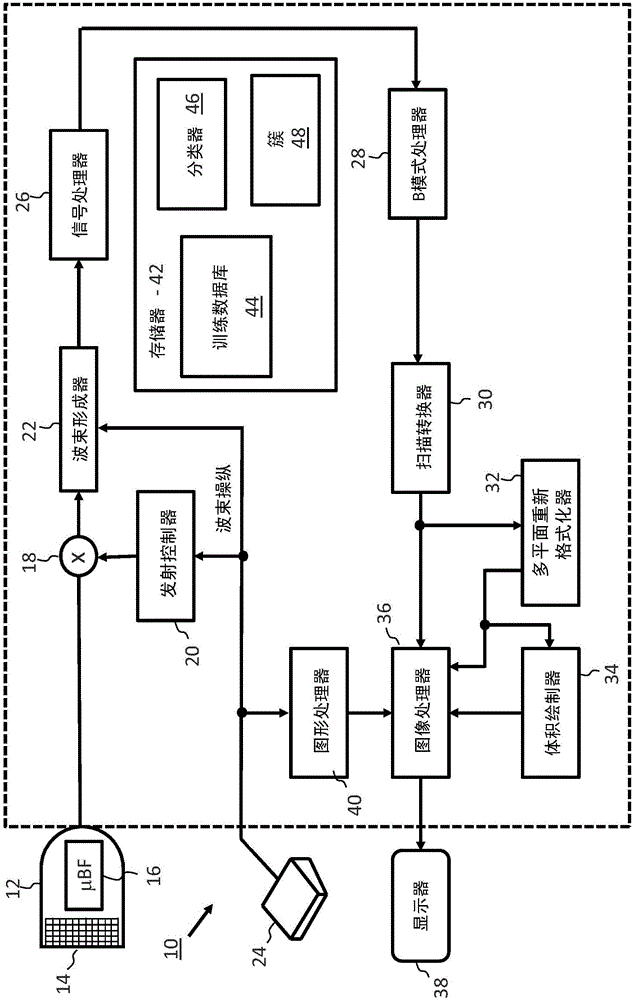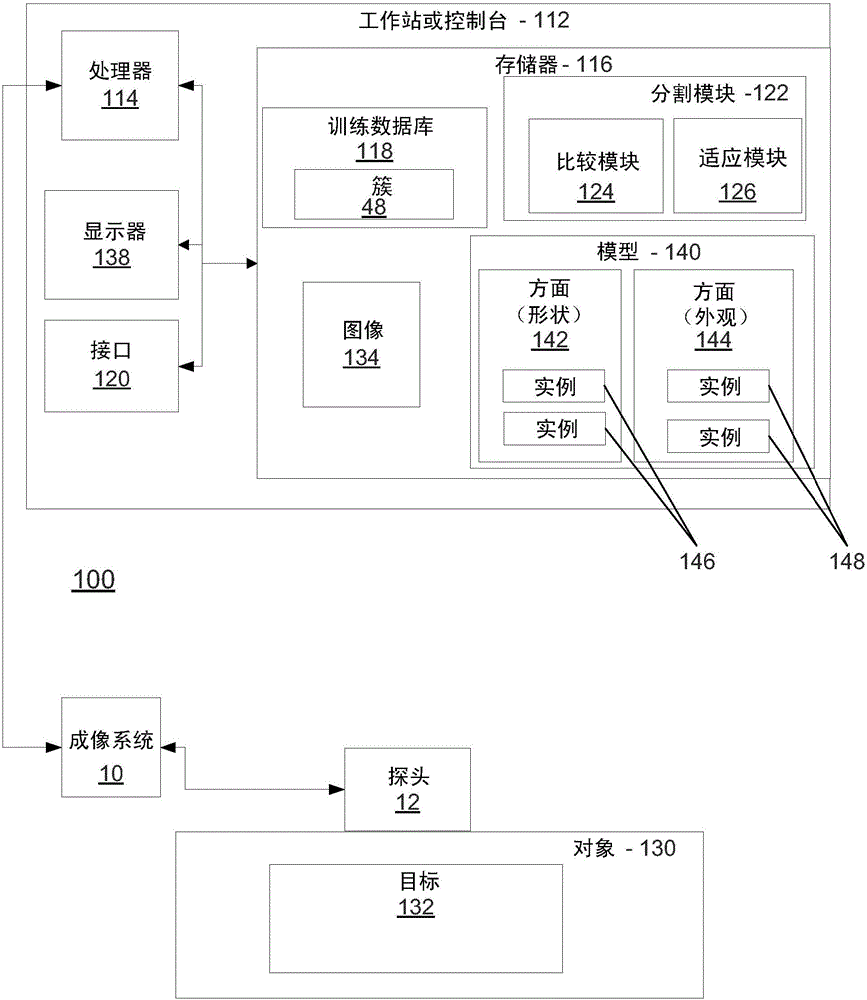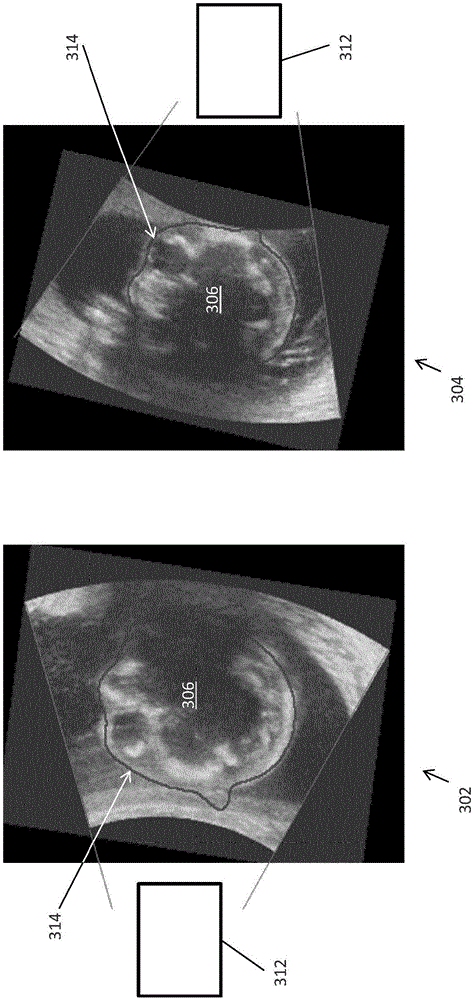Acquisition-orientation-dependent features for model-based segmentation of ultrasound images
An ultrasound image and ultrasound imaging technology, applied in the field of medical systems, can solve the problems of inaccuracy and inaccuracy of segmentation
- Summary
- Abstract
- Description
- Claims
- Application Information
AI Technical Summary
Problems solved by technology
Method used
Image
Examples
Embodiment Construction
[0017] According to the present principles, model-based segmentation is performed using more accurate model selection to perform adaptation of one or more models. In ultrasound imaging, an imaging probe gathers imaging data that may appear differently based on the orientation of the probe, ie, the appearance of the image changes when the relative position or orientation of the imaged subject changes relative to the probe. In one embodiment, fetal ultrasound images are collected. It is extremely difficult to define which images should be acquired from a fixed orientation about the fetus when the fetus is moving freely in the uterus. For example, a user may not be able to easily identify whether they are imaging the left or right side of the fetus' head. According to the present principles, anatomical features are selected according to the orientation of the fetus with respect to the probe. For example, the right ear can be selected to aid in identifying how to orient the prob...
PUM
 Login to View More
Login to View More Abstract
Description
Claims
Application Information
 Login to View More
Login to View More - R&D
- Intellectual Property
- Life Sciences
- Materials
- Tech Scout
- Unparalleled Data Quality
- Higher Quality Content
- 60% Fewer Hallucinations
Browse by: Latest US Patents, China's latest patents, Technical Efficacy Thesaurus, Application Domain, Technology Topic, Popular Technical Reports.
© 2025 PatSnap. All rights reserved.Legal|Privacy policy|Modern Slavery Act Transparency Statement|Sitemap|About US| Contact US: help@patsnap.com



